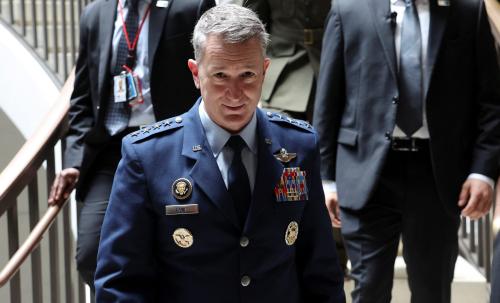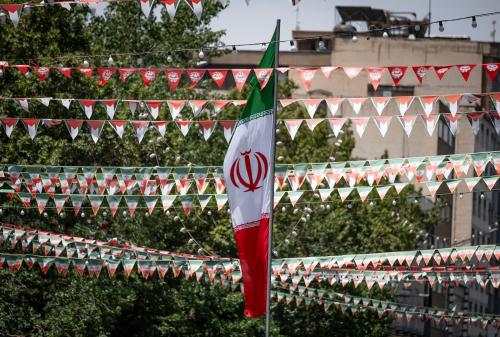The recent decision by the Pentagon to alert an additional 43,000 National Guard and reserves personnel for potential military duty reflects the growing strain our national security commitments are placing on our all-volunteer force. Claiming that the system is “in large measure broken,” Defense Secretary Donald H. Rumsfeld has already told the services to “rebalance” the forces to reduce the need for reserves mobilizations. But do we really want a military that is less reliant on our citizen-soldiers? Or one that is more, not less, easily deployed abroad? Before the military dismantles today’s carefully crafted force structure, Americans should consider why the force was constructed this way in the first place and what might replace it.
The current U.S. military structure—known as the “Total Force”—was implemented after the Vietnam War. The system was designed to require activation of Guard and reserves personnel in order to wage war. Defense officials ensured that war-fighting capabilities were integrated across the active and reserves components to such a degree that, as an Army chief of staff, Gen. Creighton Abrams, is said to have claimed, “they’re not taking us to war again without calling up the reserves.”
Abrams and others recognized that when reservists are mobilized, whole communities are affected to a much greater degree than when a draft is conducted of only young eligible men. Their primary concern was that when reservists went to war, troops serving abroad would have more support “back home.”
But the Total Force had another goal as well—to act as a check on indiscriminate or capricious uses of military force. Recent experience in the Balkans and the Middle East demonstrates that it is easier to send troops abroad than it is to bring them home. And history shows that Congress rarely has acted against a president to limit the use of force. Thus, the Total Force was designed to compel Congress to scrutinize military operations. As employers give up workers and as families say goodbye to soldiers augmenting active forces, Congress should be pressured by constituents to act. In sum, the sacrifices of waging war—or even keeping peace—are supposed to spread throughout our democratic society to such a degree that our elected officials are forced to debate the wisdom of sending troops abroad.
The difficulties confronting the current military leadership demonstrate that the Total Force is operating as planned. By next spring a full 37 percent of military personnel serving in Iraq will be members of the Guard or reserves—proving that today’s military can neither wage war nor keep peace without its “part-time” soldiers. There is no question that Guard and reserves forces—as well as their employers and families—are feeling the strain from multiple deployments. Faced with significant drops in recruitment and retention of personnel, the Pentagon is beginning to question whether this post-Vietnam system is appropriate for the commitments of the 21st century. Rumsfeld has specifically directed the military to reduce its reliance on reserve forces in two areas—those required in the early part of an operation and those most suited to peacekeeping. Unfortunately, many of the proposals aimed at limiting the use of the reserves risk undermining the strengths of the Total Force.
The Pentagon is right to recognize the need to improve military capabilities for stabilization operations. This may require retraining current forces or even creating new types of units.
The answer is not, however, to destroy the current system by replacing reserve forces with civilian contractors or by shifting the entire burden to the active force. Both options yield a military that is less reliant on citizen-soldiers and more detached from the various layers of our diverse society. A military force without reserves is also more easily deployed abroad—logistically and politically. Thus, Rumsfeld’s proposal to limit reserve troops early in a campaign would effectively reduce political oversight on the use of force. Given the intent of the Total Force, we should question the implications of this choice.
In today’s Total Force structure, repeated activations of reserves are supposed to take a toll. The budding debate over the structure and use of our military is a healthy reflection that the system is working. Unfortunately, Rumsfeld’s response—to restructure the force for more efficient, less noticeable military deployments—risks ensuring that such democratic debates will simply fade away.
The Brookings Institution is committed to quality, independence, and impact.
We are supported by a diverse array of funders. In line with our values and policies, each Brookings publication represents the sole views of its author(s).



Commentary
Op-edA Citizen Check on War
November 16, 2003